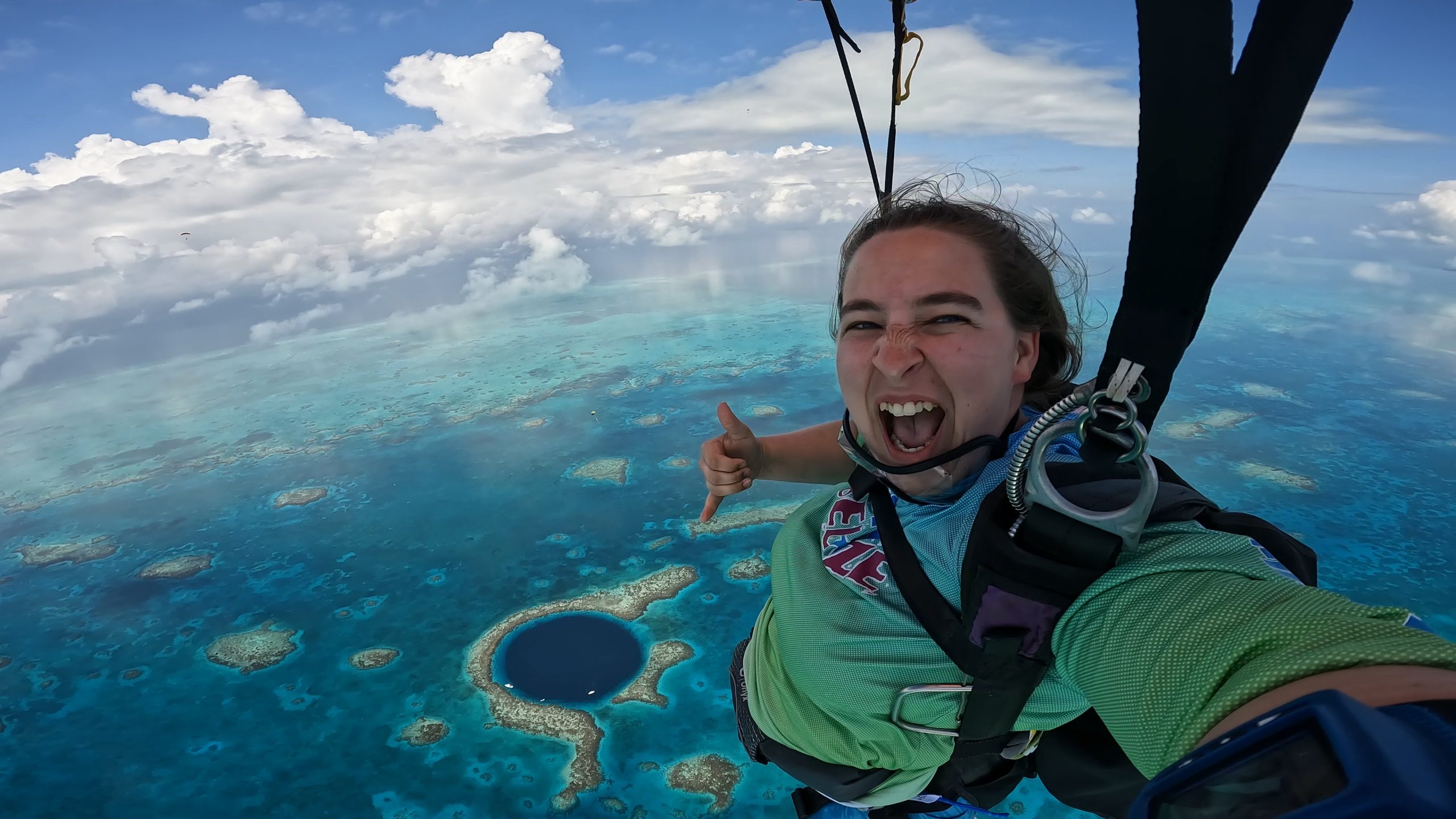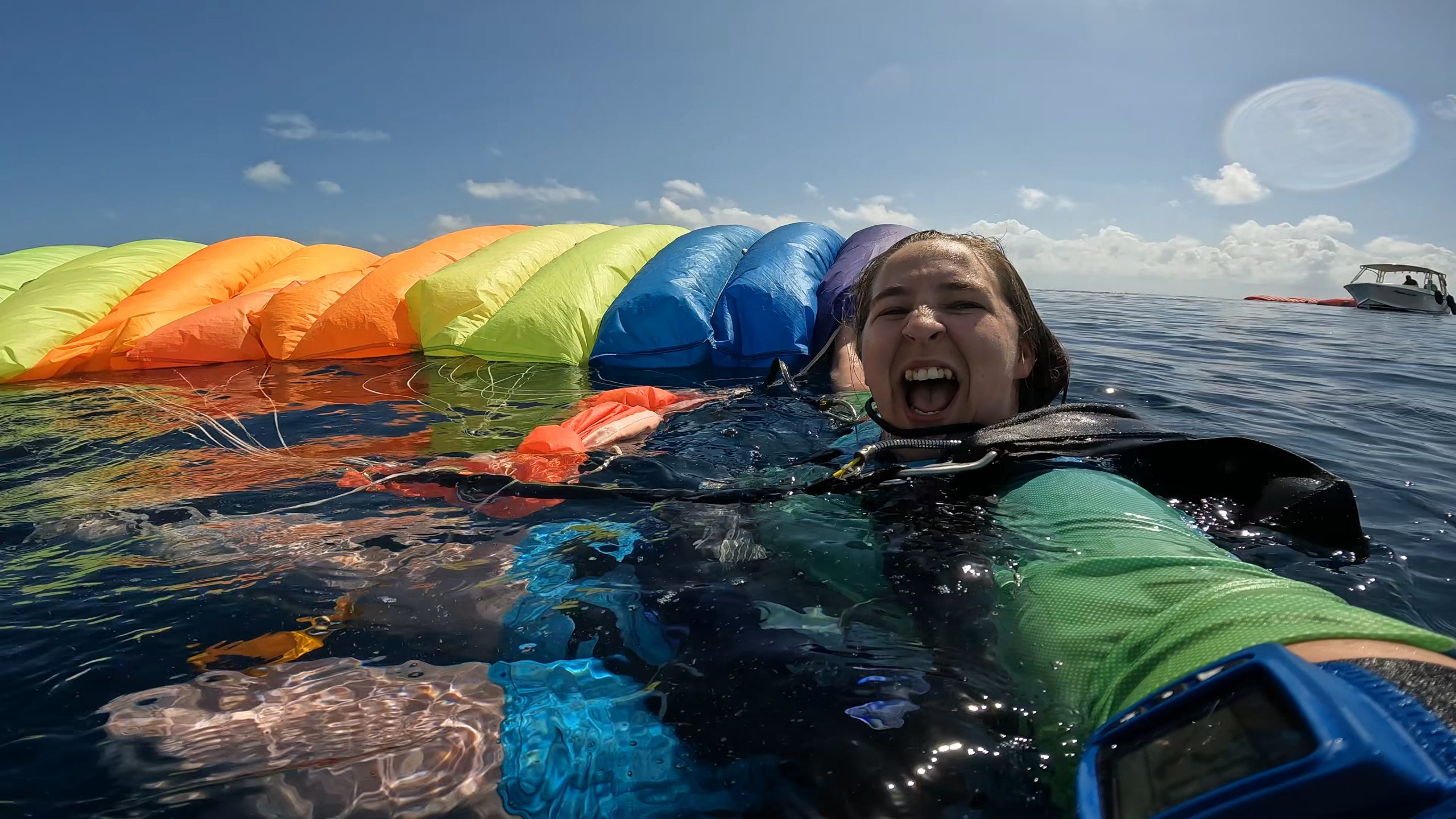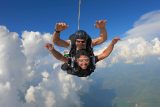Can You Skydive Into Water?
General
Posted by: Wisconsin Skydiving Center 3 weeks ago
Do you ever dream of skydiving into water? Like – in a majestic way, not a nightmare-ish way?
Parachuting into water is a fun way to skydive – some people love it, while others see absolutely no point in adding the extra risk (or the annoyance of salty and/or wet gear). This article will take a deeper look at how a skydive into water works, who can pursue landing water-style instead of land-side, and some of the risks associated with these liquid landings.
PLUS, a quick snippet from Wisconsin Skydiving Center’s very own, Sara Kutcher, who had the most exciting and beautiful jump of her life while intentionally landing in water. Ah! Let’s go!

How to Skydive into Water
The first step to learning how to skydive in water is to get your skydiving A License – the first of four license levels issued by the USPA (United States Parachute Association), i.e. A, B, C and D – and get used to landing on solid ground. You learn how to land in the water as part of your B License training. You also need to have the appropriate flotation aids, strong swimming skills, and mental toughness.
Why can’t you skydive into water without all this preparation? The level of risk is significantly higher when landing in water versus land. Fortunately it’s rarely done unintentionally, but sometimes it happens when people are unable to make it back to their designated landing area.
B License water landing course.
The USPA B License water landing course is designed to teach jumpers about the dangers of landing in water and what to do in the event of an unintentional water landing. They are taught on the ground and with real-life scenarios.
Water training is usually conducted in the summer months or using an indoor pool. It entails participants wearing a ragged out skydiving rig and going through the procedures as if they are flying their parachute and realizing they are about to land in water.
Procedures include opening the face visor on a helmet and taking off the chest strap, making it easier to swim out of the harness. Then, participants jump into the water, fully submerge their face and head, and have a canopy thrown over them. This makes it very dark under the water and forces the jumpers to navigate swimming out of a harness, through parachute lines, and in the right direction … all by feel.
Water landing gear.
PFD’s – personal flotation devices – are required in the event of a planned water landing. Think: a fanny pack that inflates around your waist if you need it to.
Strong swimming skills.
Before planning to put your parachute in water, you should consider your swimming skills when you’re not wearing a parachute. Wearing a skydiving rig is sort of like wearing a backpack with leg straps. That physical restriction in combination with having a parachute potentially land on top of you as you plunge into the water means you need to have super strong swimming skills to pull it off.
Mental preparation.
Along with the strong physical skills mentioned above, it’s critical that you’re in the right headspace when considering taking on the extra risk of water. To mentally prepare, talk with jumpers who have water landing experience, ask as many questions as you need, and practice your water landing drills!
What is the Highest Height You Can Safely Jump into Water?
The highest height you can safely jump into water is typically around 100 feet unless you’re a trained athlete or stunt artist. Flinging your body into water willy-nilly is generally unsurvivable.
But, you can survive skydiving into water?? Well, we’re wearing a parachute when we skydive into water, so the rules are a bit different – we’re not breaking the surface of the water at terminal velocity. This, in concert with the B License water landing course, enables skydivers to jump into water from many thousands of feet!
Lake Erie Skydiving Disaster: What Happened?
In 1967, 18 skydivers accidentally exited over Lake Erie instead of their intended landing area, an airport. Why did this happen? Super heavy cloud coverage. This is why we don’t skydive through clouds. It’s so dangerous that it’s actually illegal. Due to a mix-up with the radar in the plane, the jumpers unintentionally landed in freezing water. Sixteen of the 18 skydivers perished.
The technological and training advancements in our sport are incredible, but accidents do happen. Diligence is critical.
Landing with a Parachute in the Blue Hole
Our very own Sara Kutcher accomplished a major skydiving bucket list item: jumping into the Blue Hole located three hours by boat off the coast of Belize!
In addition to standard training, Sara prepared for the jump by asking jumpers who have previously skydived into water for their best tips. On jump day, she put the experience behind her 275 jumps, USPA C License, and ”a lot of breathing techniques and mental visualization” to successfully complete the jump. The only modification she made was to forego her helmet based on the pre-jump brief.

As quoted in Skydive Mag, Sara said afterwards: “The whole experience was almost beyond words – it was a strange, surreal blend of disbelief and awe.”
Her favorite part? “The sense of accomplishment and ‘I cannot believe I just did that’ feeling when I safely landed within target. Your frame of reference isn’t the same as it is on land because you don’t have buildings, trees or cars to help with your sight picture.”
So proud of you, Sara! Rock on.
Ready to fulfill your skydiving dreams? Book a tandem skydive, get licensed, and SEND IT! Blue skies!
Categories:
You May Be Interested In:

Staff Spotlight: Dario Meloni
4 weeks ago by Wisconsin Skydiving Center

Can You Skydive With Dentures?
2 months ago by Wisconsin Skydiving Center

Does Skydiving Change Your Life? 5 Powerful Ways It Can.
2 months ago by Wisconsin Skydiving Center

How Fast Do You Fall When Skydiving?
3 months ago by Wisconsin Skydiving Center